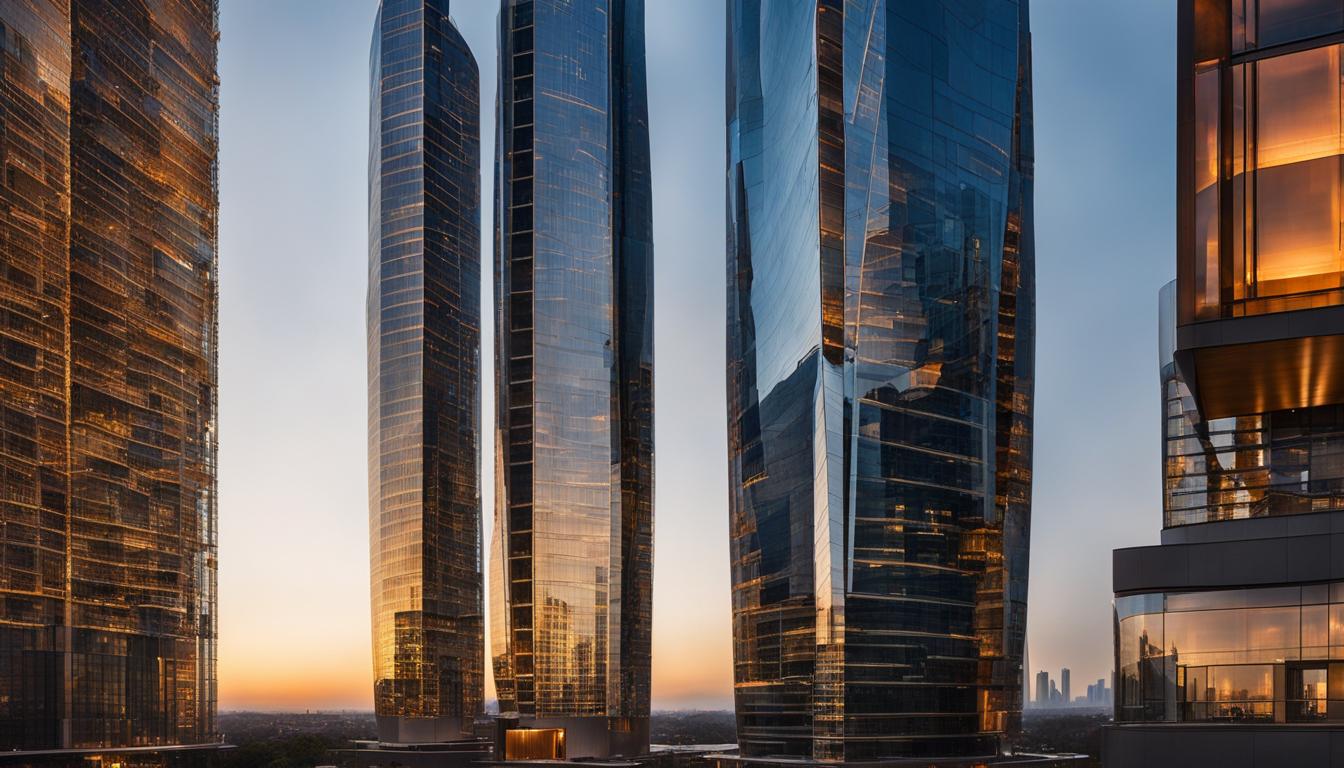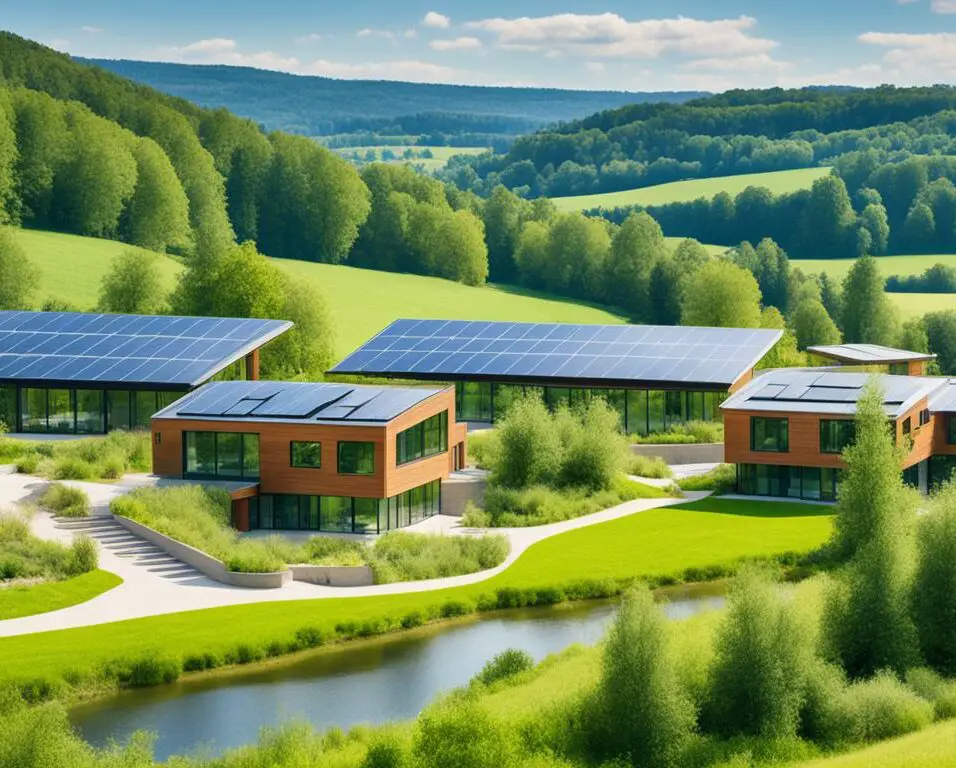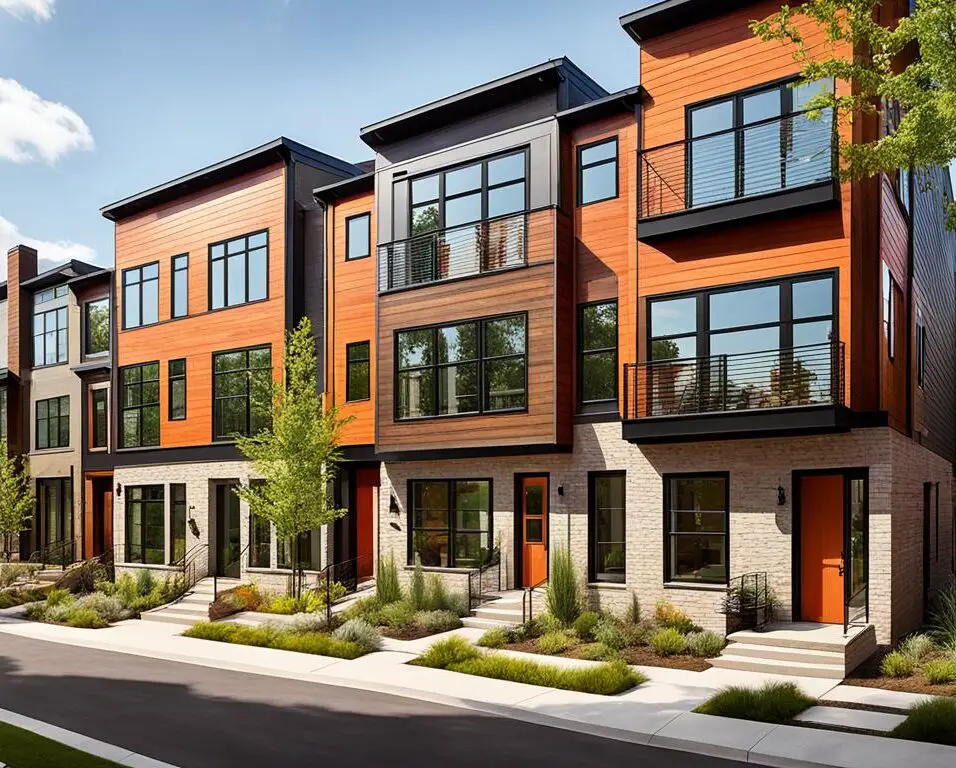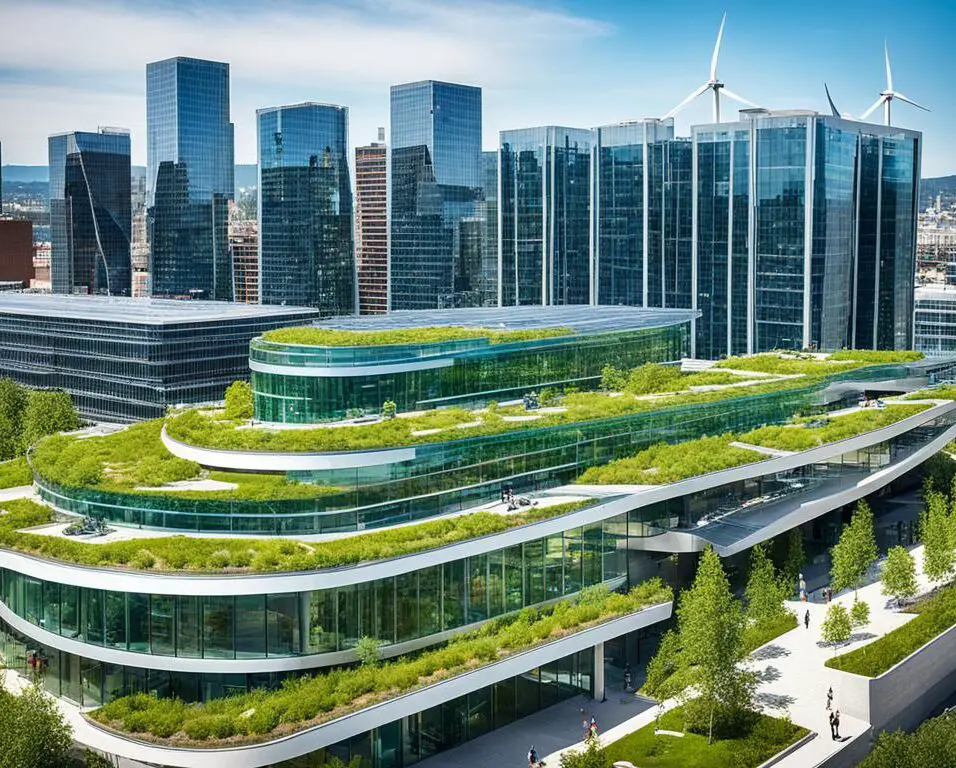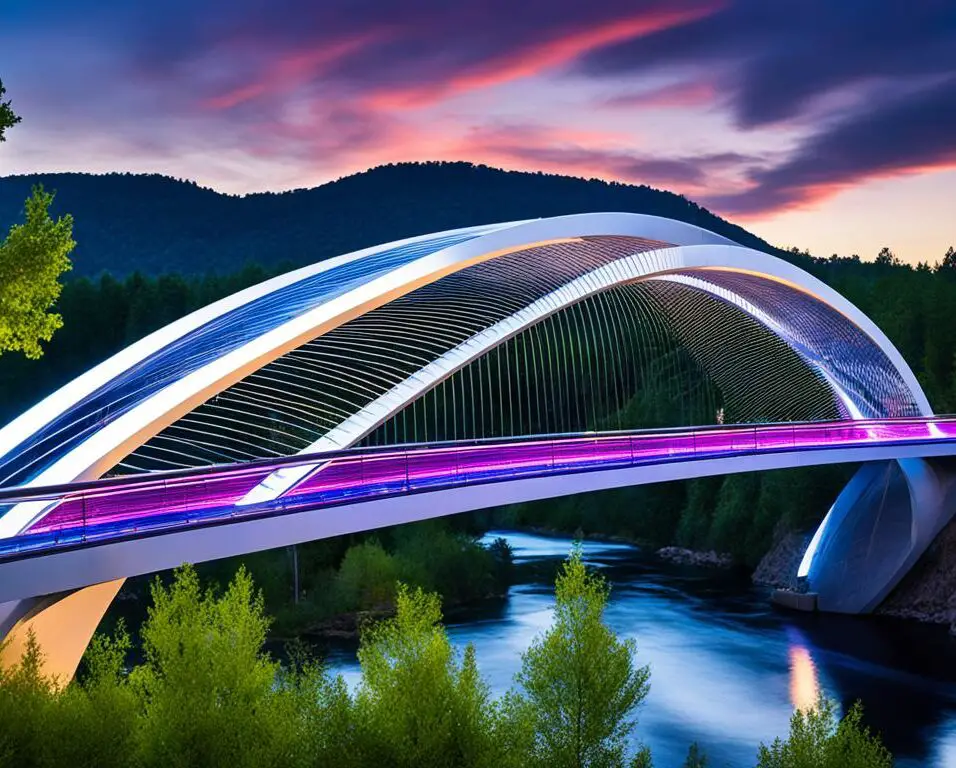Unveiling the Secrets of Modern Architectural Styles
Greetings! In this article, I will take you on a captivating journey into the world of modern architectural styles. These styles have the power to redefine the skylines of our cities, creating awe-inspiring structures that leave us in awe. Together, we will uncover the secrets behind these architectural styles, shedding light on their impact on urban landscapes and how they shape the way we live and experience our built environment.
Key Takeaways:
- Modern architectural styles have a profound influence on the design and aesthetics of our cities.
- These styles bring together innovative design principles that push the boundaries of architectural creativity.
- From skyscrapers to public spaces, modern architectural styles redefine the skyline and transform the urban fabric.
- Understanding the characteristics of different modern architectural styles helps us appreciate their unique contributions.
- The legacy of modern architectural styles will continue to shape the future of architecture for generations to come.
The Rise of Modern Architectural Styles
In recent years, modern architectural styles have experienced a significant rise in popularity. Architects and designers are embracing the innovative design principles that these styles offer, resulting in groundbreaking and visually stunning structures that redefine the way we perceive architecture.
One notable style is the International Style, characterized by sleek lines, minimal ornamentation, and a focus on functionality. This style emerged in the early 20th century and has since become a hallmark of modern architecture. Its influence can be seen in iconic buildings like the Seagram Building in New York City.
Another influential style is green architecture, which prioritizes sustainability and environmental consciousness. With a growing awareness of climate change and the need for eco-friendly practices, green architecture has gained traction around the world. Buildings like One Central Park in Sydney, with its vertical gardens and solar panels, exemplify the integration of nature and sustainability in modern architecture.
Each modern architectural style brings its own unique influence to the field. Whether it be the sleek aesthetics of the International Style or the sustainable features of green architecture, these styles shape the way we design and experience our built environment.
Growing Architectural Influence
The influence of modern architectural styles goes beyond the visual appeal of buildings. These styles have a profound impact on urban landscapes, shaping the way we interact with our surroundings and influencing the overall culture of cities.
The rise of modern architectural styles has redefined the concept of urban living. The integration of innovative design principles has created spaces that are not only functional but also aesthetically pleasing, enhancing the quality of life for residents and visitors alike.
Moreover, modern architectural styles have had a significant influence on other design disciplines, such as interior design and furniture design. The principles of these styles are often reflected in the choice of materials, color palettes, and overall aesthetics of interior spaces, creating a harmonious relationship between architecture and its interior elements.
Design Principles that Shape the Future
The rise of modern architectural styles has brought forth a set of design principles that continue to shape the future of architecture. These principles prioritize innovation, sustainability, and functionality, paving the way for new possibilities and advancements in the field.
- Innovation: Modern architectural styles push the boundaries of traditional design concepts, encouraging architects to explore new materials, construction techniques, and spatial arrangements.
- Sustainability: With environmental concerns at the forefront, modern architecture emphasizes sustainable practices, such as the use of renewable energy sources, green roofs, and efficient building systems.
- Functionality: Modern buildings are designed with the needs of their occupants in mind, creating spaces that are adaptable, accessible, and responsive to the evolving demands of society.
By embracing these design principles, architects and designers continue to redefine the possibilities of modern architecture, ensuring its relevance and impact in the years to come.
| Architectural Style | Description | Example |
|---|---|---|
| International Style | Characterized by sleek lines, minimal ornamentation, and functionality. | 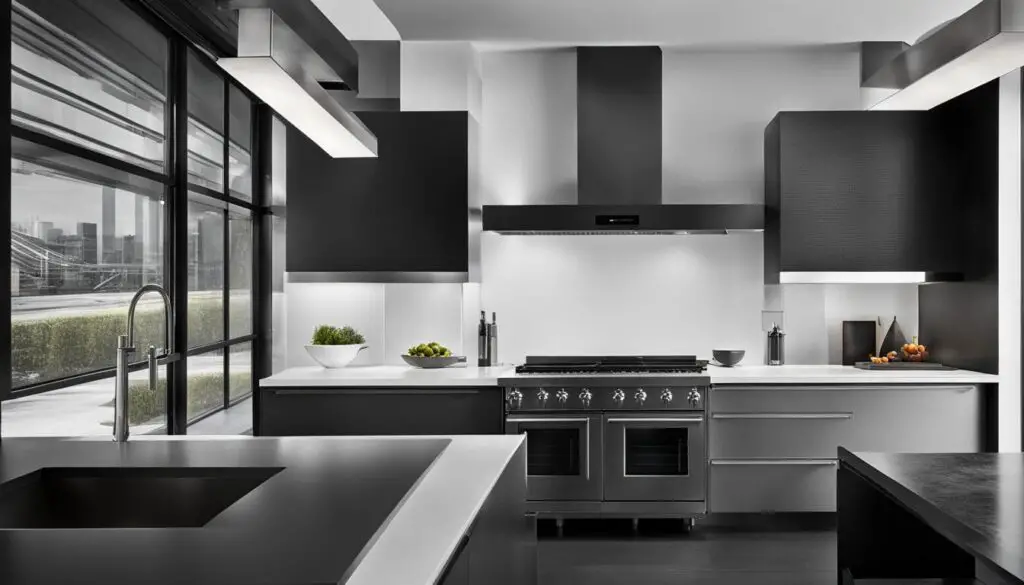 |
| Green Architecture | Prioritizes sustainability and environmental consciousness. Integrates nature and sustainable features into buildings. | 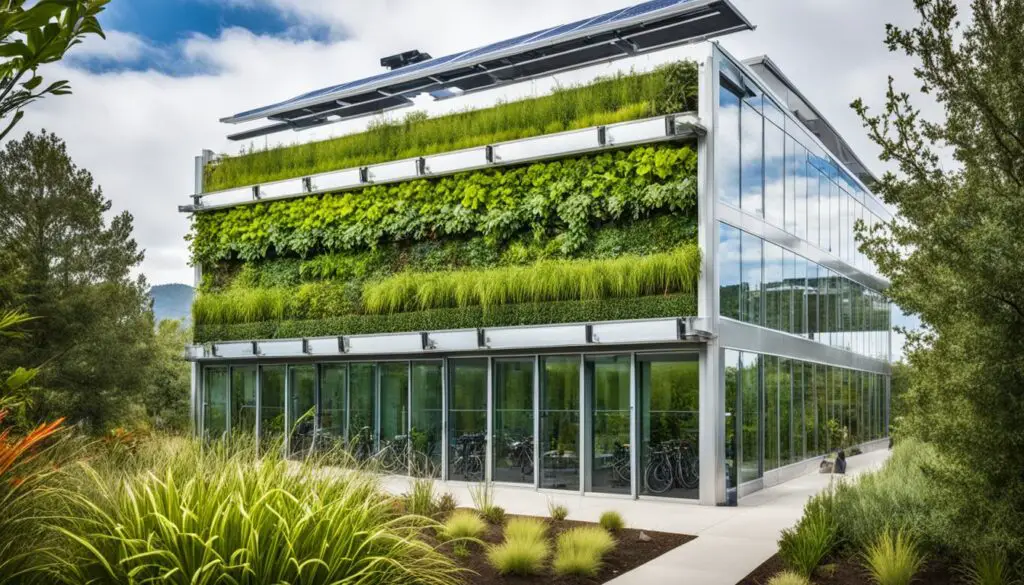 |
Exploring Different Modern Architectural Styles
In this section, we will take a closer look at some of the most prominent modern architectural styles. Drawing on the factual data, we will explore the characteristics and features that define each style. From the bold geometric forms of Brutalism to the minimalistic elegance of Scandinavian architecture, we will showcase examples of these styles and highlight their contributions to the modern architectural landscape.
1. Brutalism
Brutalism, characterized by its raw concrete constructions, emerged in the mid-20th century. This architectural style, often associated with public buildings and urban infrastructure, emphasizes functionality and bold geometrical forms. Notable examples of Brutalist architecture include the Yale Art and Architecture Building by Paul Rudolph and the Trellick Tower in London.
2. Scandinavian Architecture
Scandinavian architecture, known for its clean lines, simplicity, and focus on natural lighting, gained popularity in the mid-20th century. This style embraces minimalism, functionality, and the use of natural materials. Noteworthy examples of Scandinavian architecture include the iconic Sydney Opera House by Jørn Utzon and the Finnish Pavilion at the New York World’s Fair designed by Alvar Aalto.
3. Postmodernism
Postmodernism is a diverse architectural style that emerged in the late 20th century. It emphasizes a playful approach to design, combining elements from different historical periods and cultures. Postmodern architecture often features bright colors, elaborate ornamentation, and a focus on context and symbolism. Examples of postmodern architecture include the Piazza d’Italia in New Orleans designed by Charles Moore and the Dancing House in Prague by Frank Gehry and Vlado Milunić.
4. High-Tech Architecture
High-Tech architecture, also known as Structural Expressionism, emerged in the late 20th century and emphasizes the use of advanced technology and industrial materials. This style showcases exposed structural elements and incorporates technological innovations into the design. The Pompidou Centre in Paris designed by Renzo Piano and Richard Rogers is a notable example of High-Tech architecture.
By exploring these different modern architectural styles, we gain a deeper understanding of the creativity and innovation that shape our built environment. Each style brings its own unique characteristics and contributes to the ever-evolving landscape of modern architecture.
The Enduring Legacy of Modern Architectural Styles
Modern architectural styles have left an enduring legacy that can be seen in cities and skylines around the world. Through their architectural innovation and forward-thinking design principles, these styles have reshaped the way we live, work, and interact with our built environment.
From the sleek lines of the International Style to the sustainable features of green architecture, modern architectural styles have pushed the boundaries of creativity and functionality. They have challenged traditional norms, embracing new materials and construction techniques to create structures that captivate and inspire.
Architectural innovation has played a pivotal role in the development of these styles. Architects and designers have constantly pushed the envelope, striving to create buildings that not only fulfill their intended purpose but also stand as symbols of progress and vision. This commitment to innovation has resulted in buildings that are not only aesthetically striking, but also sustainable, energy-efficient, and technologically advanced.
As we conclude our exploration of modern architectural styles, it is evident that their impact will continue to shape the future of architecture for generations to come. The enduring legacy of these styles serves as a testament to the power of human ingenuity and creativity in transforming our physical surroundings. Through their distinctive designs and forward-thinking approaches, modern architectural styles have become an integral part of our collective cultural identity.



